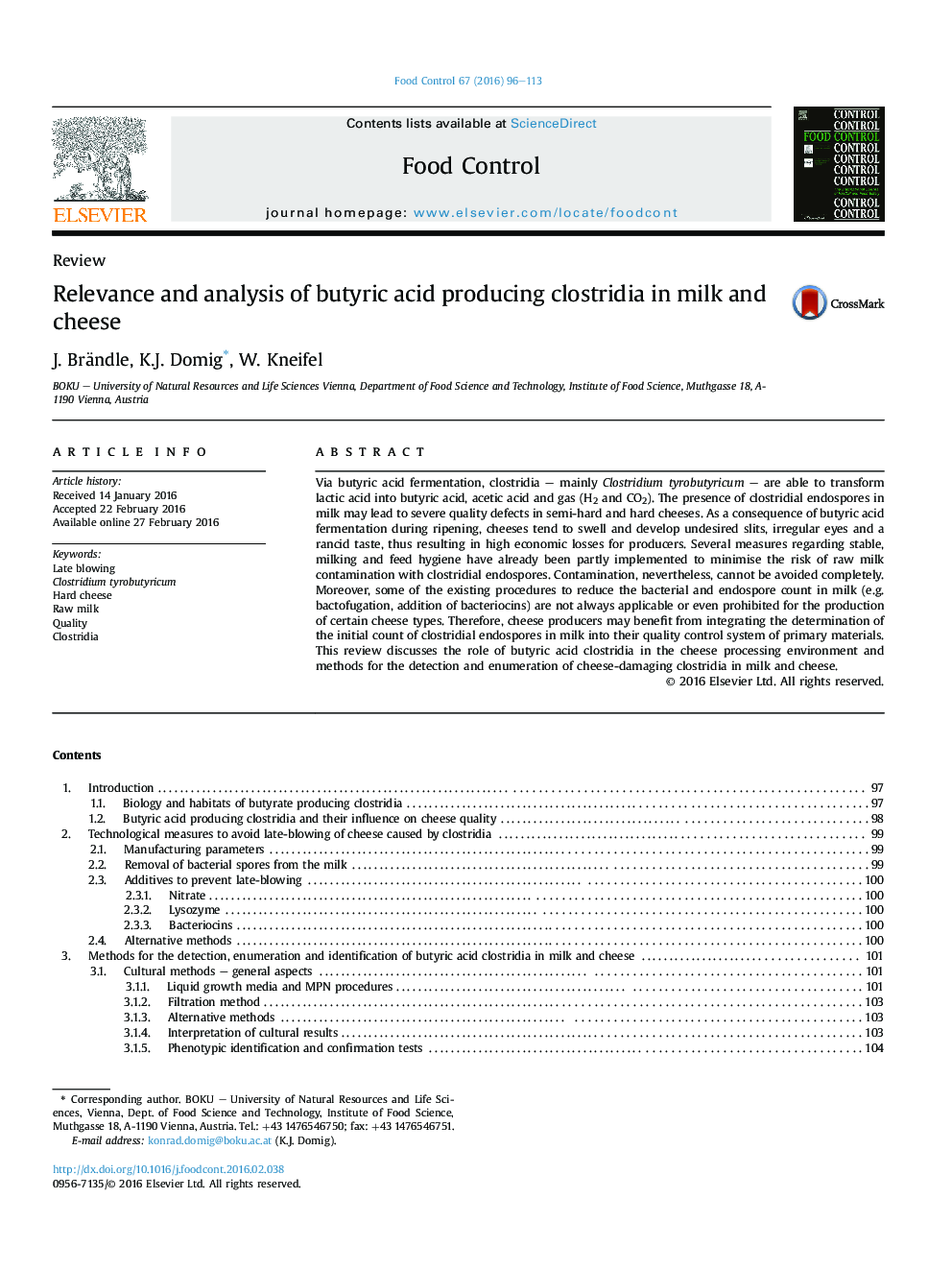| کد مقاله | کد نشریه | سال انتشار | مقاله انگلیسی | نسخه تمام متن |
|---|---|---|---|---|
| 6390102 | 1628395 | 2016 | 18 صفحه PDF | دانلود رایگان |
عنوان انگلیسی مقاله ISI
Relevance and analysis of butyric acid producing clostridia in milk and cheese
ترجمه فارسی عنوان
ارتباط و تجزیه و تحلیل کلستریدیا تولید اسید بوتیرریک در شیر و پنیر
دانلود مقاله + سفارش ترجمه
دانلود مقاله ISI انگلیسی
رایگان برای ایرانیان
کلمات کلیدی
موضوعات مرتبط
علوم زیستی و بیوفناوری
علوم کشاورزی و بیولوژیک
دانش تغذیه
چکیده انگلیسی
Via butyric acid fermentation, clostridia - mainly Clostridium tyrobutyricum - are able to transform lactic acid into butyric acid, acetic acid and gas (H2 and CO2). The presence of clostridial endospores in milk may lead to severe quality defects in semi-hard and hard cheeses. As a consequence of butyric acid fermentation during ripening, cheeses tend to swell and develop undesired slits, irregular eyes and a rancid taste, thus resulting in high economic losses for producers. Several measures regarding stable, milking and feed hygiene have already been partly implemented to minimise the risk of raw milk contamination with clostridial endospores. Contamination, nevertheless, cannot be avoided completely. Moreover, some of the existing procedures to reduce the bacterial and endospore count in milk (e.g. bactofugation, addition of bacteriocins) are not always applicable or even prohibited for the production of certain cheese types. Therefore, cheese producers may benefit from integrating the determination of the initial count of clostridial endospores in milk into their quality control system of primary materials. This review discusses the role of butyric acid clostridia in the cheese processing environment and methods for the detection and enumeration of cheese-damaging clostridia in milk and cheese.
ناشر
Database: Elsevier - ScienceDirect (ساینس دایرکت)
Journal: Food Control - Volume 67, September 2016, Pages 96-113
Journal: Food Control - Volume 67, September 2016, Pages 96-113
نویسندگان
J. Brändle, K.J. Domig, W. Kneifel,
